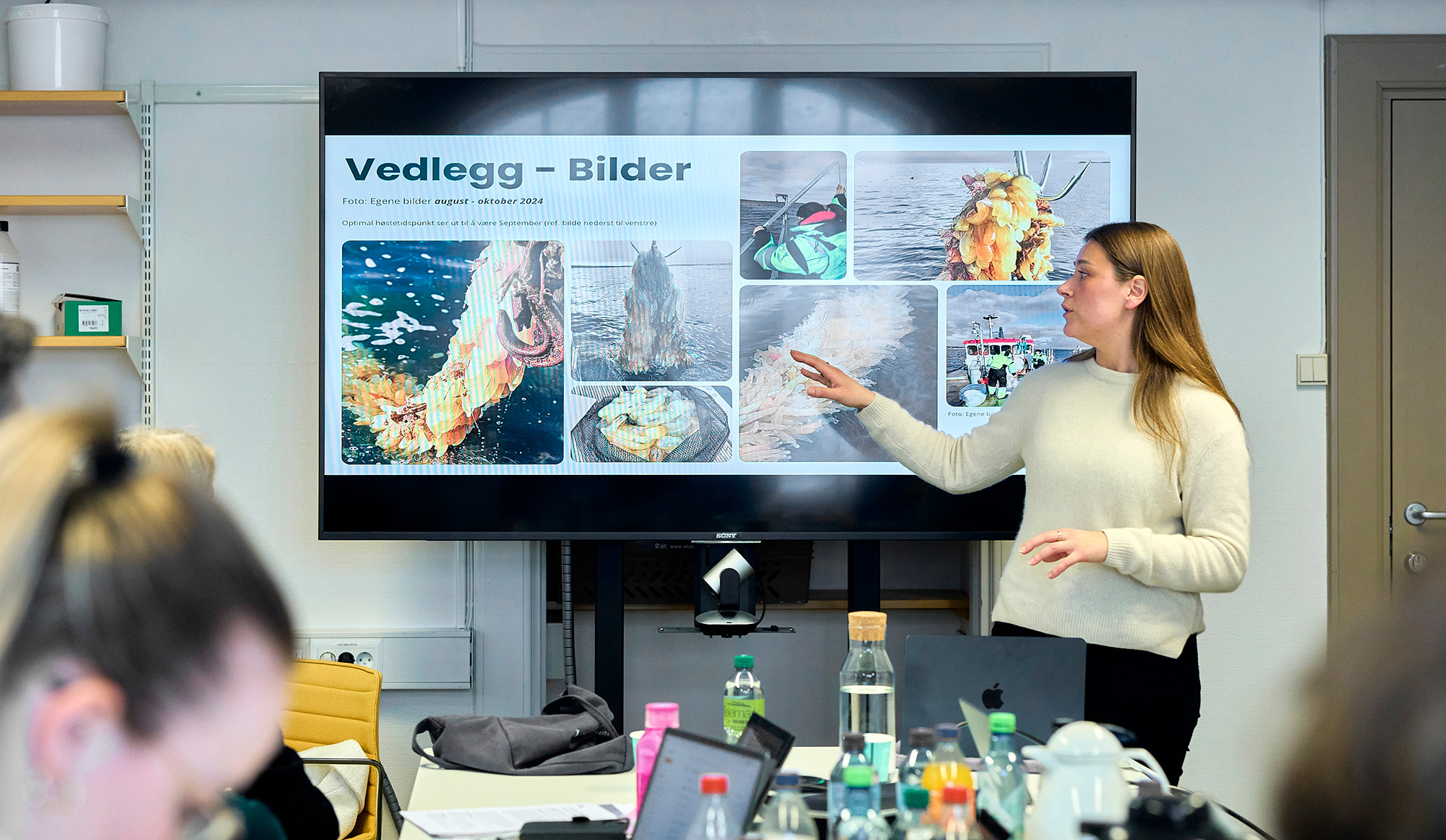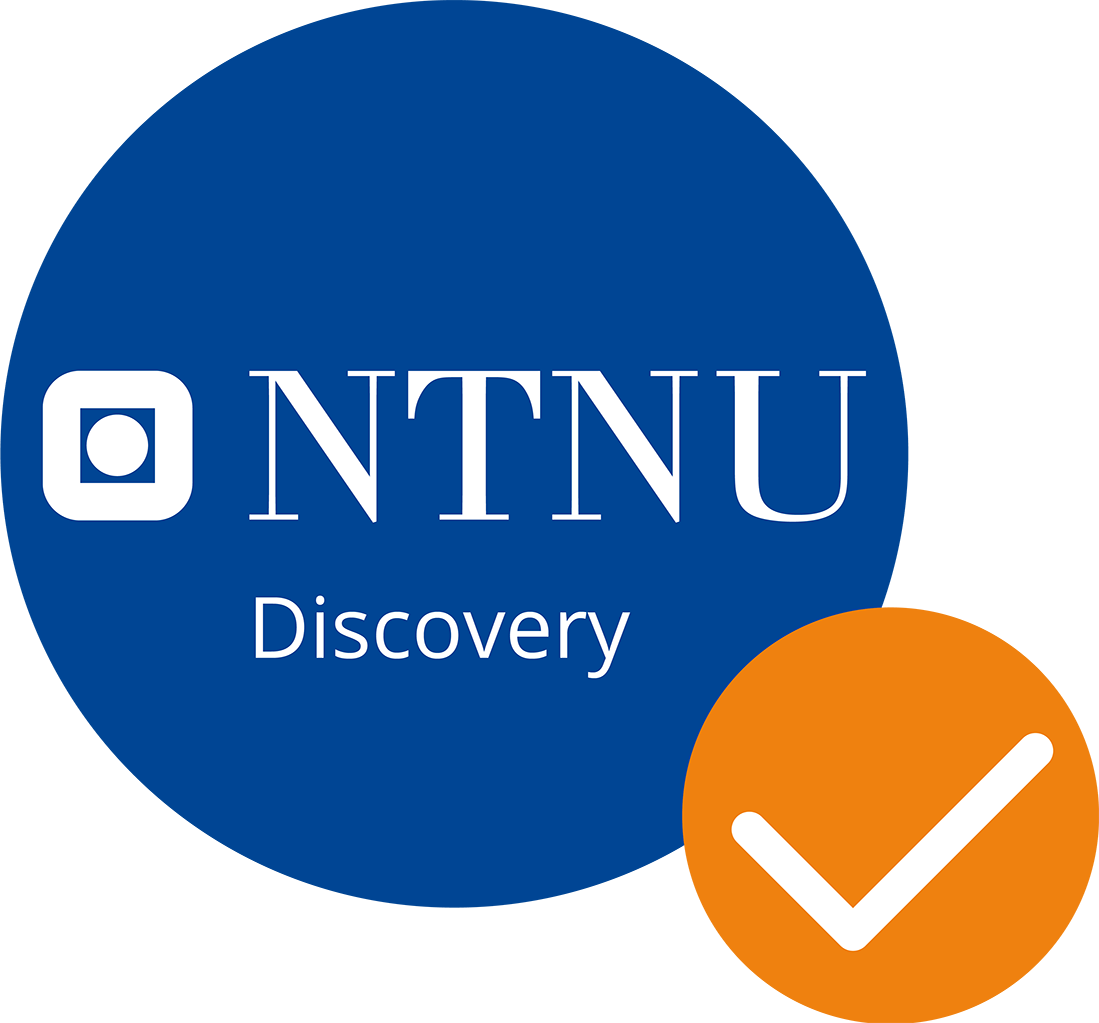
Fifteen minutes in the dragon’s den
“The clock starts now!” With a firm but friendly tone, the new head of the jury for NTNU Discovery’s main project Kristian Onarheim hands over the stage to Maria Johansen, a fourth-year student in the entrepreneurship program with a master’s degree in biotechnology. For the next 15 minutes, she will convince academics, business developers, entrepreneurs and investors in the jury to bet NOK 300,000 that sea squirts (more on what that is later) will replace the minced meat in Friday tacos.
Text: Per Steinar Moen
Photo: Tarje Skjefstad
She represents TuniSea, a group of students who will make protein-rich food from sea squirts, a subspecies of tunicates – which is the more delicate name TuniSea has chosen to use for this resource that grows along the coasts of Norway and Sweden. (Other names are ascidian or Ciona intestinalis).

Maria Johansen is a fourth-year student in the entrepreneurship program, with a master’s degree in biotechnology and represents TuniSea.
Tunicates start life as small tadpoles and end up as stubborn filter feeders that attach themselves to everything from ropes in fish farms, boat hulls, port facilities and the seabed, much like coral. For the aquaculture industry, tunicates are a maintenance problem – but Maria believes they could become an important resource to feed a growing population in a climate-challenged world.
“Tunicates have the advantage of having a taste of umami and not seafood, like other sea creatures. They have a meat structure,” says Maria Johansen. “Tunicates don’t need feeding, fertilizer, pesticides or artificial light to grow and produce far less CO2 emissions than beef,” she says.
TuniSea’s plan is to start farming tunicates and then gently process them by desalination and drying, before selling the protein-rich tunicate meat to the food industry. There is a great need for umami tasting substitutes for vegetable and meat products.
“We will take tunicates from the sea to the plate!”, concludes Maria Johansen.

Jury work is certainly not boring. The members get carried away by the potential of the various projects.
Then it’s up to the jury to ask questions. Jury member Maja Aursand Andersen from SpareBank1-SMN gets straight to the point: “What assessments have you made in terms of investment for farming – requirements and licenses?”, she asks. Others in the jury ask questions about growth opportunities, scalability and market competitors. After a total of 25 minutes, the session is over.
“Now I’m going out into the sun. Don’t stay inside for too long!” smiles Maria Johansen on her way out the door with her Mac under her arm. Despite there being NOK 300,000 in the pot for student projects and NOK 1 million for employee projects, the atmosphere is jovial.
Teamwork
Kristian Onarheim from Helse Midt-Norge has been on the jury for three years, but this is his first meeting as head of the jury. “The jury consists of people who have had different roles in the ecosystem around starting a company, including start-up experience,” he says.

Kristian Onarheim from Helse Midt-Norge is head of the jury.
His team includes entrepreneurs, researchers, consultants and potential investors with extensive experience of selecting and refining projects for commercialization. The aim is for the jury to come up with good, critical questions and feedback, regardless of whether the main project is funded or not.
Everyone who applies for funding receives feedback. A total of nine of the applicants were invited to give a presentation to the jury, and these are the ones competing for up to one million NOK to fund a main project.
“We come from different professional backgrounds, which makes it easier to understand the ideas. This is not always easy just by reading the application. The presentation can explain a lot, and sometimes it’s the deciding factor in whether or not you get funding,” says Kristian Onarheim. “We’re looking for commitment and projects that show commercialization potential,” he says.
Sometimes the jury members have different opinions about the quality and potential of a project, but at the end of the day they often agree on who should receive funding for the main project.
In the hallway, two new master’s students from the business school are waiting: Oscar Lae and Kristian Romen from Cortex Robotics. Under their arms they carry two robots – one so new and secret that it cannot be photographed. The robots are designed to simplify the maintenance of huge pipe systems at processing plants in the oil and gas industry, which can typically contain up to 2,000 kilometers of insulated – and rust-prone – pipe structures.
Climbing robot
The maintenance of these is a major cost and burden. “There are many manual methods – with climbers and large amounts of scaffolding,” says Kristian Romen. “The cost of scaffolding can be up to NOK 200,000 just to maintain 5-6 meters of pipe.” The robots will climb on the outside of the pipes, carrying sensors and other tools that can measure and reveal any areas that need maintenance.

Cortex Robotics thoroughly argues for the potential of their innovation.
The prototype looks like an advanced Lego Technics model with many flexible joints and wires. “The soldering took longer than planned,” says Oscar, pointing out some joints on the climbing robot that need to be reinforced and further developed.
The jury members fire away with questions. Jury member Borgar Ljosland has experience from other robotics projects and asks the boys how far they have come in developing the prototype, digital testing, researching the market and their business model.
In the hallway after the presentation, Oscar and Kristian are very pleased. “The questions were engaging and good,” says Kristian. “There are always new questions we haven’t thought of during such pitches.”
Kristian Onarheim and the jury will be presented with nine projects today out of a total of 17 applications that were submitted. “There should have been more applications,” he says, “at least twice as many. We receive many applications from Gløshaugen and the medical community on Øya, but fewer from other parts of NTNU.” He encourages more people to apply. “This is a safe arena with little risk and just something to win,” says the head of the jury before the door opens for the next applicants to present their potential life’s work.
The jury for NTNU Discovery’s main project consists of
Kristian Onarheim (jury leader), Central Norway Regional Health Authority
Maja Aursand Andersen, SpareBank1-SMN
Vårinn Vaskinn, NTNU
Margrethe Skjeldstad, CoFounder
Borgar Ljosland, ProVenture
Gisle Østeregn, StartupLab

A dedicated jury welcomes more applicants!
Other news
New millions for staff and students
A big awards evening with the granting of main project funding from NTNU Discovery during the Tech, Hugs and Rock'n'Roll event at Digs on Thursday, June 5.
Ignorance killed the cat
If cats are to live up to their reputation of having nine lives, cat owners need to know more about the pets that occupy our laps while we watch TV and keep us company when we go to the bathroom.
Contact:
Project manager
Jan Hassel
E-mail: jan.hassel@ntnu.no
Phone: 906 53 180
Office: Main building
Håvard Wibe
E-mail: havard.wibe@ntnu.no
Phone: 41 47 37 68
Office: Main building



